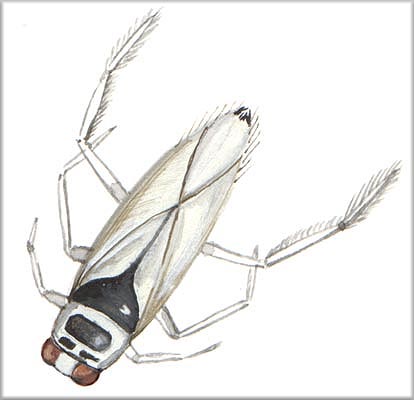Notonetta - Notonecta glauca
Notonecta glauca is the most common of the backswimmers: it is easily recognised from the other aquatic insects because it swim upside down, due to the large air bubble it carries on its abdomen as an oxygen reserve.
The air, which is trapped by the median and lateral hairs, shifts the bugs baricentre, so its swimming position is regulated by light and not by the force of gravity and depends on the direction of its luminous forehead .
A good flyer, its tapered body about 16mm long, has flattened hind legs provided with swimming hairs: the front legs, like the median, have long claws which it often uses to clasp underwater plants or break the water surface, where its lies in wait for prey or comes up to replenish its air supply.
Backswimmers are among some of the fiercest water bugs; with its short but strong rostrum, this species in particular can give even humans a painful bite. The Backswimmer usually feeds on tadpoles, small fish and on other arthropods.
The female continues to lays her eggs on the stems of water plants up to the winter months. The immature nymphs, which moult five times, reach the adult stage in June when the adults of the previous year die.
Notonecta glauca is common in habitats with stagnant and slow flowing waters and is widespread in Europe, the Caucasus and North Africa.





